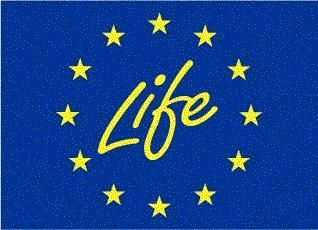| 1. Where can you find information concerning the IPPC implementation progress in the Member States? |
Much information is provided within the website of the European Union. Under the web-site of
http://europa.eu.int/comm/environment/ippc/ippc_ms_implementation.htm
it is possible to access the following very useful documents:
- The Member State (MS) replies to the questionnaire posed by the European Commission in order to assess the implementation progress of the IPPC in each MS
- The Analysis of Member States’ first implementation reports on the IPPC Directive. This report analyzes the progress of the IPCC implementation in each MS based on the answers provided to each country
- The Communication from the Commission to the Council, the European Parliament, the European Economic and Social Committee and the Committee of the Regions on the progress made in implementing the Council Directive 96/61/EC concerning integrated pollution prevention and control (European Commission, 2003)
The aforementioned information is provided only for the 15 Old Member States. For the 10 New Member States information can be found in the web-sites of the competent authorities involved in IPPC and in the web-site of projects aiming to promote the implementation of the IPPC.
|
2. Which are the most prominent obstacles which impede the faster implementation of the Directive? |
As it is shown on Table 2, there is a wide variety of problems which different Member States face. However, there are some problems which are seen in several Member States and are considered to be the most prominent ones:
- Inadequate or insufficient transposition of certain Directive requirements
- There is no definition of Best Available Techniques and no national guidance are provided
- The information provided regarding the requirements for a permit application is insufficient and may be a cause of controversy
- The requirements related to the monitoring and reporting activities are inadequate
- There is no provision to ensure compliance by existing installations no later than October 2007 and subsequent periodical review of permits
Which are currently the countries (or Regions) which have achieved the greatest progress in the IPPC implementation and which ones have achieved the least progress?
UK, Sweden, France and the Flemish Region of Belgium have achieved significant progress. In these countries/regions the IPPC implementation has been fast and there is an effective and mature permitting system in place. On the other hand, Luxembourg, Spain and the Walloon Region of Belgium are behind in the implementation of the Directive.
|
| 3. Which are the Directive provisions which have not been transposed (or are inadequately transposed) in some Members States? |
Most of the provisions have been adequately transposed through National Legislation in the Member States. The degree of progress in the implementation of the IPPC Directive varies from Member State to Member State. However, the Commission has identified two requirements which are lacking in many Member States. These are the following:
(1) The reconsideration and updating of permit conditions. Many Member States have not established clear reconsideration procedures that take into account all the criteria which are specified in Article 13 of the Directive.
(2) The requirement of Article 17(2) of the Directive to provide for the participation in the permitting process of the public of the affected Member State, in cases of transboundary effects and cooperation. In most cases this requirement has not been satisfied.
Which are the main problems which the new Member States face with respect to the IPPC implementation?
The main problems encountered in the New Member States are the following:
- The low level of knowledge of the personnel in the competent authorities involved in the permitting of IPPC installations
- The issuing of guidelines for BAT in the required industrial sector
- A large number of applications still needs to be reviewed in order to grant permits and meet the October 2007 deadline
- Personnel shortage in administrative authority offices
|
| 4. How do the Member State Comment on the IPPC Directive |
The Member States maintain the view that the IPPC Directive is effective in protecting the environment from industrial activities. However, some Member States have commented on its lack of great uniformity and technical coherence with respect to other Community legislation
|
1. What are Environmental Quality Standards – Emission Limit Values?
Environmental Quality Standards are concentrations of a particular pollutant or group of pollutants in water, sediment or biota which should not be exceeded in order to protect human health and the environment
Emission Limit Values refer to the mass, expressed in terms of certain specific parameters, concentration and/or level of an emission, which may not be exceeded during one or more periods of time. Emission limit values may also be laid down for certain groups, families or categories opf substances.
|
2. Why do we need them?
Standards are the “measuring stick” for substances in soil, surface water, groundwater and sediment. They tell us about the quality of the environment and how “clean is clean”.
|
3. What is the difference between EQS’s and ELV’s?
The principal difference between ELV’s and EQS’s is that ELV’s concern the discharges from an industrial source while EQS’s concern the environmental medium without any reference to the sources of emissions.
|
4. How do we set EQS’s?
Environmental quality standard is a concept for which there is no uniform definition, and there is no specific way for setting these standards. Each Member State follows the EU legislation (guideline) and following this sets their own EQS’s if necessary. The setting of EQS’s mentioned in the text is a possible method for implementing standards but in general each MS has different EQS setting procedures.
|
5. How do we set ELV’s?
When setting an ELV’s for a specific installation one should take into account the Best Available Technologies (BAT’s) and the EQS’s for the specific location. It should be noted here that ELV’s cannot be based on non-national BAT guidelines (BREF’s) but on “national” BAT. It is obvious that ELV’s set by EU legislation could not take into account the specific characteristics of any location and thus as in the case of EQS, ELV’s set by EU legislation should be seen as minimum requirements and thus Member States could set stricter values.
|
6. What are the key elements incorporated in the multi-step process for setting EQS’s?
Priority setting, risk assessment, risk management and public consultation.
|
7. What other factors are important when establishing environmental quality standards?
Degree of exposure of sectors of the population and in particular sensitive sub-groups, climatic conditions, sensitivity of flora and fauna and their habitats, historic heritage exposed to pollutants, economic and technical feasibility, long-range transmission of pollutants, possible effects of contaminants on the ecosystem and ‘background’ concentrations of substances in the environment.
How does National Law address the need for additional measures in cases where use of best available techniques is insufficient to satisfy an environmental quality standard set out in or defined pursuant to Community legislation?
The imposition of additional measures occurs in cases where the relevant legislation specifies an environmental quality standard which lays down conditions stricter than those which can be achieved using best available techniques. Moreover, it is also possible to require other measures to ensure compliance with an environmental quality standard. Such environmental quality standards include the water quality limits set for vulnerable bodies of water where additional measures would be required in cases in which the best available techniques would not be adequate to meet those requirements. |


